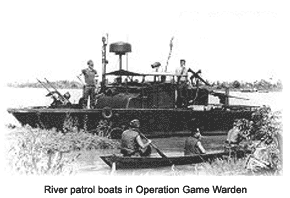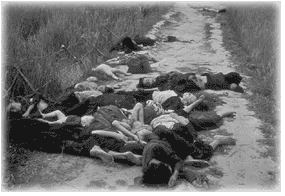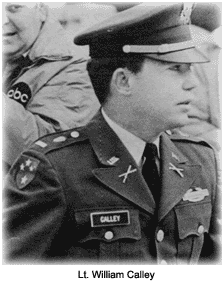To call the My Lai Massacre a "black eye" for the U.S. military is to call the entire Vietnam war just a "minor misunderstanding." So horrific was the gunning down of women, children, and the elderly, that the act was labeled by many as an atrocity.
Background
In July 1954, the Geneva Accords officially ended the First Indochina War. France agreed to leave its colonies, Vietnam as well as Laos and Cambodia. The agreement split Vietnam into North and South at the 17th Parallel and provided for free elections in July 1956, to unify the country.
The U.S. opposed the elections, fearing that Vietnamese nationalist and communist Ho Chi Minh would seize power and the country would fall into the communist column. Ho Chi Minh gained control of North Vietnam and organized his troops, the Viet Minh, to fight for the reunification of their country.
 Although the U.S. had not signed the accords, they agreed to provide "advisors" and other military aid to the South Vietnamese government, beginning in January 1955.
Relations between North and South Vietnam disintegrated to the point that greater American military involvement was "inevitable," to stop the incursion by the North.
American fighting troops entered the escalating conflict in January 1965 with Operation Game Warden, a U.S. Navy river patrol on the 3,000-nautical-mile inland waterways in South Vietnam.
Operation Rolling Thunder commenced in March 1965, when more than 100 U.S. fighter-bombers attacked targets in North Vietnam and the Ho Chi Minh Trail, a strategic conduit to the South. The first ground troops, 3,500 marines, entered South Vietnam, also in March of that year.
By July, the U.S. had a military presence of 125,000 men, and the draft of eligible men was increased to 35,000. Captured U.S. pilots were mocked and paraded down the streets of Hanoi. The war was being televised live back to the U.S.
Despite the continued bombing, the U.S. was unable to stop the inexorable flow of North Vietnamese troops into the south, the New York Times reported. By the end of 1965, U.S. troops numbered nearly 185,000; 90,000 South Vietnamese soldiers had deserted, and 35,000 North Vietnamese soldiers had infiltrated the South. About half of the South Vietnamese countryside was now controlled by Vietcong (VC), the People's Liberation Armed Forces of South Vietnam.
By the end of 1966, American troops had reached nearly 400,000 and had suffered more than 5,000 deaths, mostly at the hand of VC snipers and small-arms fire by ambush. Land mines and booby traps seemed to be nearly everywhere.
More than 460,000 American troops were stationed in Vietnam by the end of 1967, and more than 16,000 deaths were recorded.
On January 31, 1968, the Tet Offensive was launched by about 85,000 Vietcong and regular North Vietnam troops (NVA). It was a surprise attack on a hundred cities and villages in South Vietnam. In the Battle for Saigon, 50 battalions of U.S. and allied troops defeated 35 Vietcong/NVA battalions. In February, General William Westmoreland, commander of the U.S. troops, requested that 206,000 more soldiers be sent to Vietnam.
Although the U.S. had not signed the accords, they agreed to provide "advisors" and other military aid to the South Vietnamese government, beginning in January 1955.
Relations between North and South Vietnam disintegrated to the point that greater American military involvement was "inevitable," to stop the incursion by the North.
American fighting troops entered the escalating conflict in January 1965 with Operation Game Warden, a U.S. Navy river patrol on the 3,000-nautical-mile inland waterways in South Vietnam.
Operation Rolling Thunder commenced in March 1965, when more than 100 U.S. fighter-bombers attacked targets in North Vietnam and the Ho Chi Minh Trail, a strategic conduit to the South. The first ground troops, 3,500 marines, entered South Vietnam, also in March of that year.
By July, the U.S. had a military presence of 125,000 men, and the draft of eligible men was increased to 35,000. Captured U.S. pilots were mocked and paraded down the streets of Hanoi. The war was being televised live back to the U.S.
Despite the continued bombing, the U.S. was unable to stop the inexorable flow of North Vietnamese troops into the south, the New York Times reported. By the end of 1965, U.S. troops numbered nearly 185,000; 90,000 South Vietnamese soldiers had deserted, and 35,000 North Vietnamese soldiers had infiltrated the South. About half of the South Vietnamese countryside was now controlled by Vietcong (VC), the People's Liberation Armed Forces of South Vietnam.
By the end of 1966, American troops had reached nearly 400,000 and had suffered more than 5,000 deaths, mostly at the hand of VC snipers and small-arms fire by ambush. Land mines and booby traps seemed to be nearly everywhere.
More than 460,000 American troops were stationed in Vietnam by the end of 1967, and more than 16,000 deaths were recorded.
On January 31, 1968, the Tet Offensive was launched by about 85,000 Vietcong and regular North Vietnam troops (NVA). It was a surprise attack on a hundred cities and villages in South Vietnam. In the Battle for Saigon, 50 battalions of U.S. and allied troops defeated 35 Vietcong/NVA battalions. In February, General William Westmoreland, commander of the U.S. troops, requested that 206,000 more soldiers be sent to Vietnam.
 The massacre
A unit of the U.S. 11th Light Infantry Brigade, Charlie Company, was ordered into combat by Captain Ernest Medina, to "seek and destroy" any Vietcong or NVA in My Lai (pronounced ME LIE), a small hamlet in the province of Quang Ngai. The province was suspected to be a haven for the enemy.
The unit was trained in Hawaii and had been in South Vietnam for three months. They averaged 20 years old and were considered to be one of the U.S. Army's best. At the least, many of the men had become frustrated over civilians harboring Vietcong operatives. There was a constant fear of ambush and a feeling that the war was being lost, which added to the day's tensions.
According to intelligence, most of the villagers headed to their local markets at 7 a.m. With the attack scheduled for 8 a.m., solders were told to assume that any persons remaining were, in all likelihood, either VC or VC sympathizers. They were ordered to destroy the village.
The soldiers were led into My Lai by Lieutenant William Calley. They failed to find any insurgents, just ordinary villagers. Nevertheless, having been psychologically braced for a major fight, the soldiers opened fire on the villagers and killed 504 innocents, including infants.
The atrocity was interrupted by an American helicopter pilot, Hugh Thompson Jr. He landed his chopper between the soldiers and a small, huddling number of remaining villagers.
The massacre
A unit of the U.S. 11th Light Infantry Brigade, Charlie Company, was ordered into combat by Captain Ernest Medina, to "seek and destroy" any Vietcong or NVA in My Lai (pronounced ME LIE), a small hamlet in the province of Quang Ngai. The province was suspected to be a haven for the enemy.
The unit was trained in Hawaii and had been in South Vietnam for three months. They averaged 20 years old and were considered to be one of the U.S. Army's best. At the least, many of the men had become frustrated over civilians harboring Vietcong operatives. There was a constant fear of ambush and a feeling that the war was being lost, which added to the day's tensions.
According to intelligence, most of the villagers headed to their local markets at 7 a.m. With the attack scheduled for 8 a.m., solders were told to assume that any persons remaining were, in all likelihood, either VC or VC sympathizers. They were ordered to destroy the village.
The soldiers were led into My Lai by Lieutenant William Calley. They failed to find any insurgents, just ordinary villagers. Nevertheless, having been psychologically braced for a major fight, the soldiers opened fire on the villagers and killed 504 innocents, including infants.
The atrocity was interrupted by an American helicopter pilot, Hugh Thompson Jr. He landed his chopper between the soldiers and a small, huddling number of remaining villagers.
 The cover-up
Initial investigations of the incident were conducted by Brigade commanding officer Colonel Oran Henderson. He issued a report in late April, claiming that 20 civilians had been accidentally killed, but that 128 Vietcong also were killed.
A full year after the slaughter, soldier Ron Ridenhour wrote letters to President Nixon and 29 other officials, most of whom ignored his exposé. Representative Morris Udall did not.
Calley was charged with several counts of premeditated murder, and 25 men were charged with related crimes. Two months later, the information finally reached the American public.
Calley was convicted and sentenced to life in prison, but two days later, President Nixon released him and sent him to Fort Benning, Georgia, where he spent three-and-a-half years under house arrest. A federal judge then ordered him freed. Calley's conviction was the only one of the 26 men who had faced charges.
The cover-up
Initial investigations of the incident were conducted by Brigade commanding officer Colonel Oran Henderson. He issued a report in late April, claiming that 20 civilians had been accidentally killed, but that 128 Vietcong also were killed.
A full year after the slaughter, soldier Ron Ridenhour wrote letters to President Nixon and 29 other officials, most of whom ignored his exposé. Representative Morris Udall did not.
Calley was charged with several counts of premeditated murder, and 25 men were charged with related crimes. Two months later, the information finally reached the American public.
Calley was convicted and sentenced to life in prison, but two days later, President Nixon released him and sent him to Fort Benning, Georgia, where he spent three-and-a-half years under house arrest. A federal judge then ordered him freed. Calley's conviction was the only one of the 26 men who had faced charges.